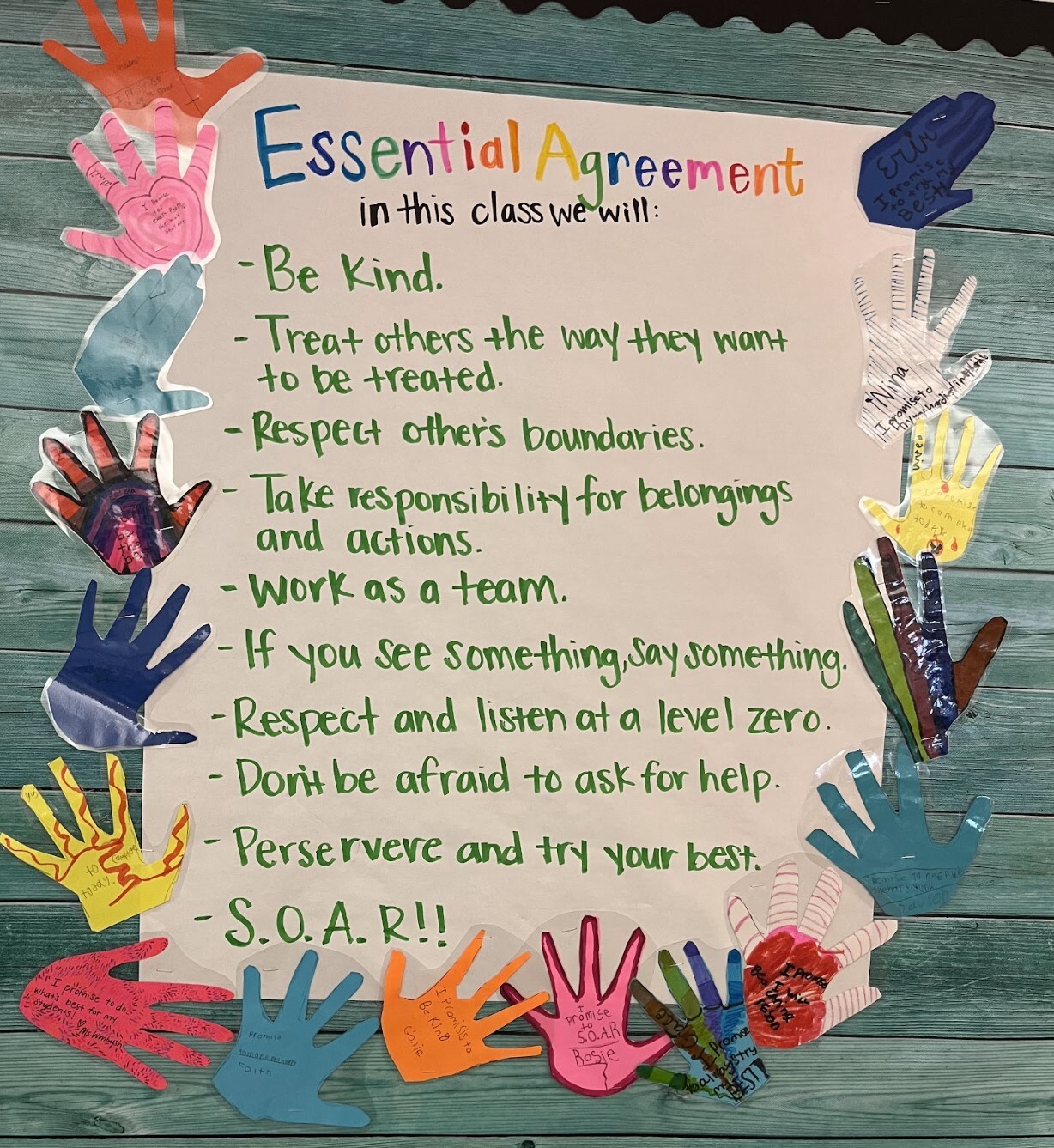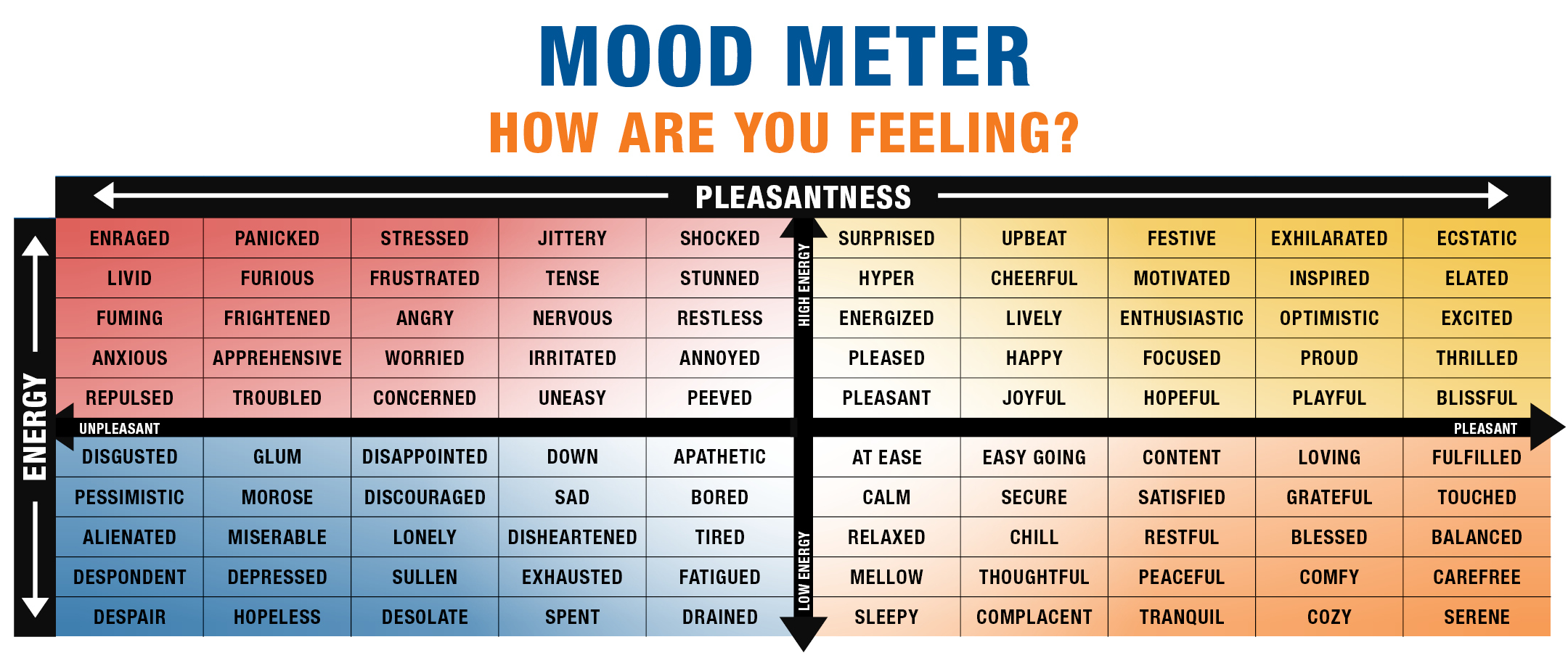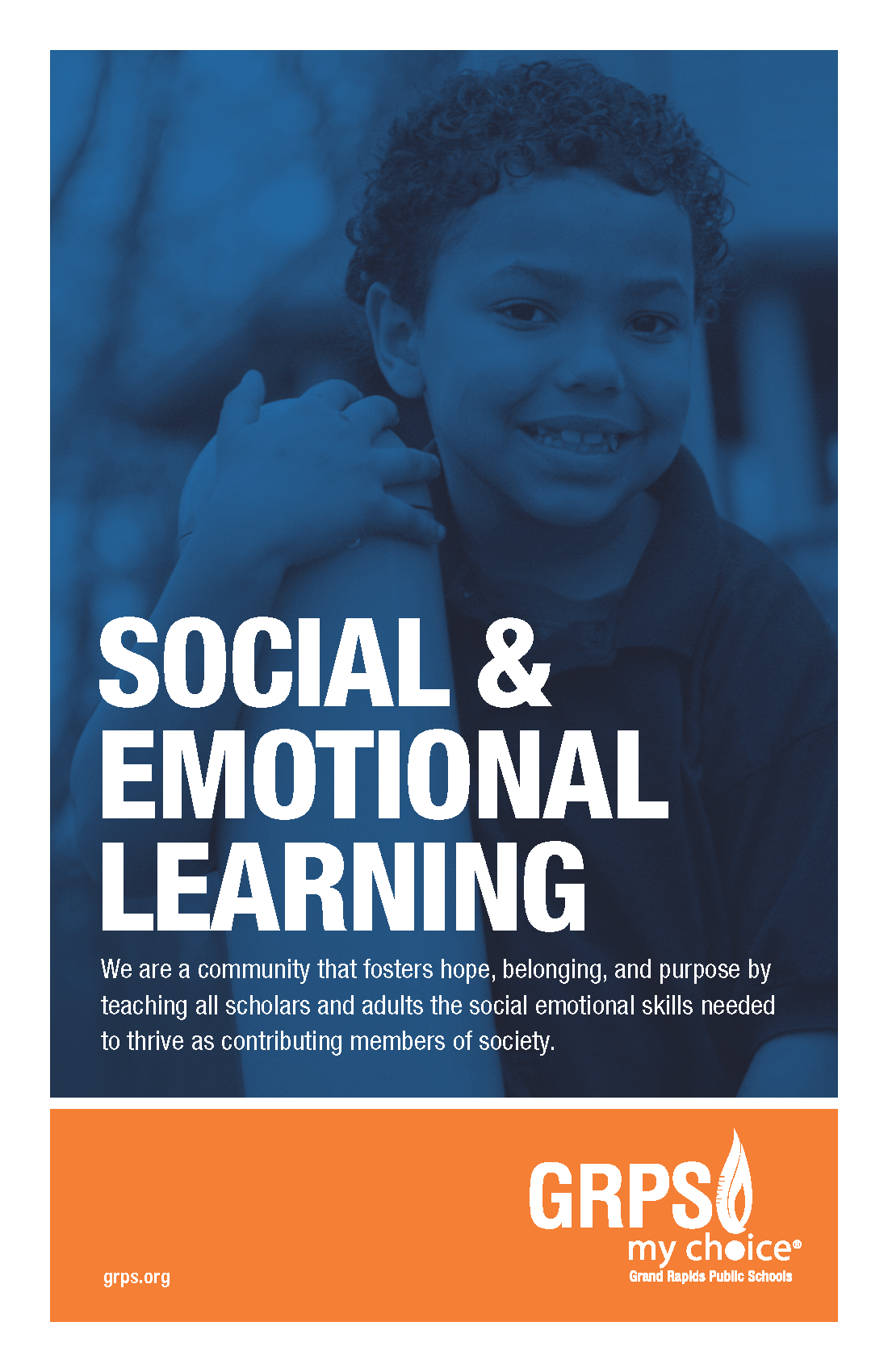SEL Resources
Social and emotional learning describes a broad ranging multitude of practices that can focus on the individual, groups, environments and whole systems.
The resources below provide social and emotional best practices and ideas for supporting scholars and families inside and outside the classroom.
SEL Resources at Home for Parents
SEL Resources for Scholars
SEL Resources at School
Restorative Practices
Restorative Practices utilizes techniques and strategies to prevent relationship damaging incidents from happening and repairing them if they do. Implementation of Restorative Practices in schools help improve the five main social and emotional learning skills: Self-Awareness, Self-Management, Relationships Skills, Social Awareness and Responsible Decision Making. Together, Social and Emotional Learning and Restorative Practices are used to improve school climate by strengthening scholar-to-scholar, staff-to-staff and scholar-to-staff relationships.
- How to Implement Restorative Practices in Your School
- Restorative Practices at Home (External PDF)
- Community Building Questions for Scholars(PDF)
- 10 Powerful Community Building Ideas
- 180 Questions for Connecting Circles and Delightful Discussions (PDF)
- Common Circle Guideline/Expectations K-5 (PDF)
- Common Circle Guideline/Expectations 6-12 (PDF)
- A list of Feelings Words (PDF)
- I Statements or Affective Statements (PDF)
- Restorative Questions for Conflict Resolution
- Restorative Circles (Video)
- Community Building with Restorative Circles (Video)
- 6 Steps for Conflict Resolution (Video)
Positive Behaviors Interventions and Supports (PBIS)
PBIS is a process for creating safer and more effective schools. It is a systems approach to enhancing the capacity of schools to educate all children by developing research-based, school-wide, and classroom behavior support systems. The process focuses on improving a school’s ability to teach and support positive behavior for all students.
SEL and Belonging
Grand Rapids Public Schools understands that SEL is a powerful lever for building caring, just, unified, and healthy communities that enable all individuals to reach their full potential. Systemic SEL implementation both promotes and requires a scholar-centered learning environment in which all scholars and adults are respected, valued, and affirmed for their unique interests, abilities, social identities, cultural values, and backgrounds. By grounding SEL in a focus on belonging, Grand Rapids Public Schools can further promote the conditions that enable all scholars to build on their unique assets and abilities to be their best.
Three Signature Practices
The 3 Signature Practices is a tool to foster a supportive environment of belonging and to promote SEL. This is one resource we can do to support SEL, "Right now!"
Shared Agreements
Creating shared agreements is a way to showcase scholar voice and as a class community reflecting on how scholars want to be treated, and how they plan to treat others.
Shared Agreement Example:
Essential Agreement
In this class we will:
- Be Kind.
- Treat others the way they want to be treated.
- Respect other's boundaries.
- Take responsibility for belongings and actions.
- Work as a team.
- If you see something, say something.
- Respect and listen at a level zero.
- Don't be afraid to ask for help.
- Persevere and try your best.
- S.O.A.R!!

Mindfulness and Wellness
Calming Your Body
There are times when you may feel your emotions are taking control of you. Below are some resources you can use to help focus your thinking, relieve stress, or ground yourself in times of uncertainty.
Relaxing Your Muscles
Relaxing Your Muscles
When we enter a heightened emotional state, our bodies may resort to a "fight or flight" response, tensing our muscles in preparation for a conflict. Relaxing these muscles can help to lower your emotional intensity, and bring your body back to a more neutral state. Take a look at some of the resources below if you're feeling tense.
Breathing Exercises
Breathing Exercises
Breathing is an important tool in physical and emotional regulation. When we feel intense emotions, we can often lose control of our breathing. Check out some of the breathing exercises below to help regain control of your breathing, or to help calm down if you're feeling elevated.
Get up and Move
Get up and Move
Movement - whether it's intentional exercise, manual labor, or just going for a walk, movement can be an excellent way to improve your mindset, relax your thinking, and process emotions. Try out some of the resources below to get your blood pumping!
Question stems for integrating movement in the classroom:
-
Do you mind if I stand in class while I work?
-
May I take a break to go for a quick walk?
-
Can I pace in the back of the classroom?
Stretching
Stretching
Stretching is an awesome way to relax and unwind after a stressful day, or to regain focus if you've been sitting still for a while. Check out some of the videos below for guided stretches and yoga flows.
Calming Your Mind
Express Yourself Through Art
Express Yourself Through Art
When words don't do the trick but you've got a lot to say, creating something artistic can be a great way to express emotion. Explore some of the resources below to tap into your inner artist. Learn more about Fine Arts programs available at GRPS.
Control What You Can
Control What You Can
Oftentimes we may feel overwhelmed by a situation - but it's important to remember that there are only so many things you can control. Take a look at the following exercise to focus your thoughts and energy on things you can influence and control.
Mindfulness
Mindfulness
Mindfulness is the state of being aware and engaged in the present, observing thoughts and feelings without judging them. Mindfulness can be a difficult state of mind to maintain because our thoughts and emotions often wander away. Use some of the resources linked below to stay connected to your thinking, your breathing, and your state of mind.
Reframing
Reframing
It can be difficult to look for "silver linings" when we're uncertain about a situation, but reframing can be a powerful tool to helping cope. Look at some of the resources below for a new perspective.
Visualizing
Visualizing
Whether its using your mind's eye to visualize a success, or removing yourself to somewhere far away, visualization can be a powerful tool in coping with stressful or uncertain situations. Take a look at some of the resources below to help imaging a new perspective.
Limit Negative Social Media
Limit Negative Social Media
Social media can be an awesome way to find new content, connect with friends, and share news. Oftentimes, however, we engage in "doom scrolling" - consuming content that makes us feel worse about ourselves, or informs us of things that make us upset. Take some time to unplug with some of the resources below.
Expressing Yourself
Name Your Emotions
Many times, we may have difficulty expressing ourselves because we may not even have the words to describe how we feel. By naming the emotions that you're feeling, you can become a more effective communicator and feel more confident in coping with what you're experiencing. Using a Mood Meter, such as the one below, can be a useful tool in naming your emotions.
GRPS Mood Meter
Use the GRPS Mood Meter with scholars, staff, and families to help build capacity in self-awareness. By using this we can begin to name our feelings and emotions and discuss the full range of where our emotions can be throughout each day.

Write it Down
Writing can be a great way to express your thoughts and feelings, whether it is done to share or done in private. Check out some of the journal prompts below to help guide your writing.







